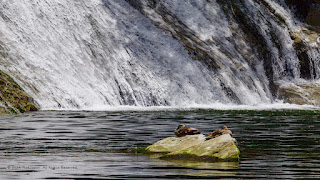Download a licensed digital photo: pix4japan.picfair.com
Order a print: pix4japan.smugmug.com
Sitting Pretty with the Union Jack・英国の風、横浜イングリッシュガーデンのユニオンジャックベンチ
Location: Yokohama English Garden, Yokohama, Japan
Timestamp: 16:29・2024/08/13
Pentax K-1 II + DFA 28-105mm F3.5-5.6 + CP
45 mm ISO 400 for 1/160 sec. at ƒ/4.0
In addition to the gazebo, several wooden, stone, and concrete benches were scattered throughout the garden, making it a delight to sit and relax while soaking in the vibrant colors, fragrant aromas of flowering plants, and the gentle hum of insects thriving in this urban oasis.
One bench that particularly caught my eye was this white bench adorned with a Union Jack. Although I knew the Union Jack is the national flag of the United Kingdom, I was less familiar with its origins.
According to the official website of the British Royal Family, the flag is a blend of three different flags, with subtle changes made over the years: the cross of St. George, patron saint of England since the 1270s; the cross of St. Andrew, patron saint of Scotland; and the cross of St. Patrick, patron saint of Ireland.
For me, the wear and tear on this particular bench, with its peeling paint, adds a charming touch and nostalgic-like vibe, perfectly complementing the character of this English garden.
References:
Copyright Notice for All Images:
© 2011-2024 Pix4Japan. All rights reserved.
Unauthorized use for AI training is strictly prohibited.
Visit www.pix4japan.com for prints and licensed download options.












